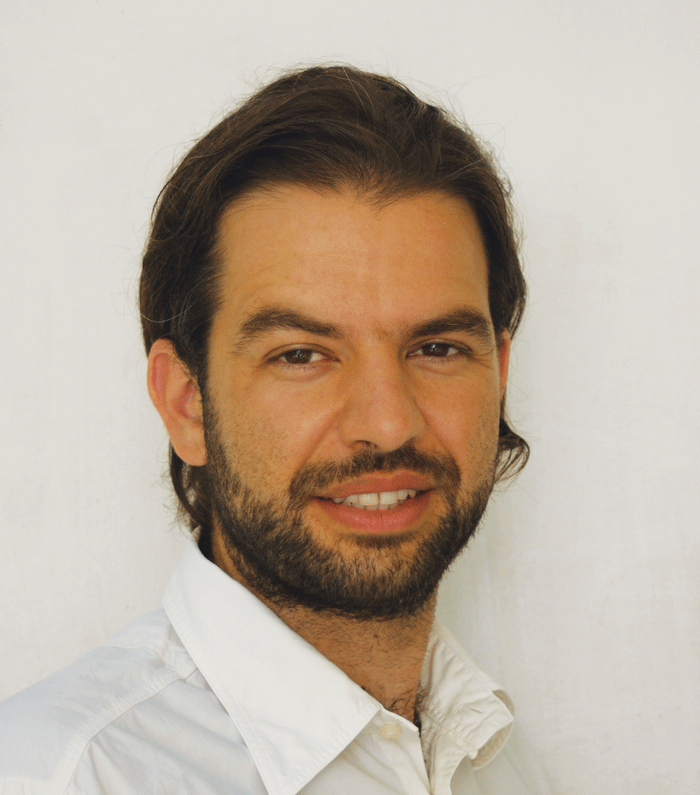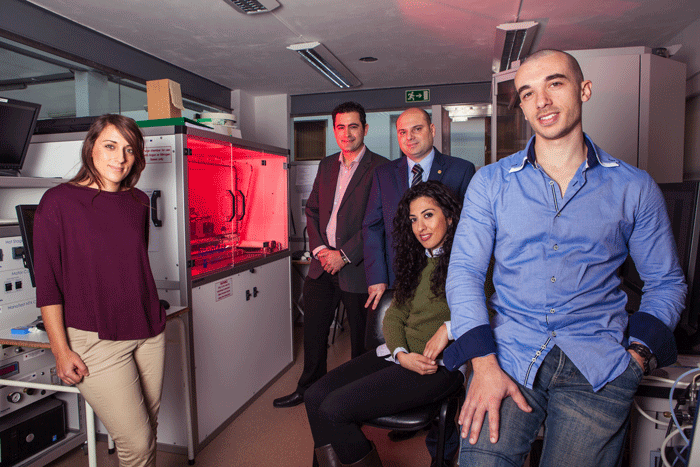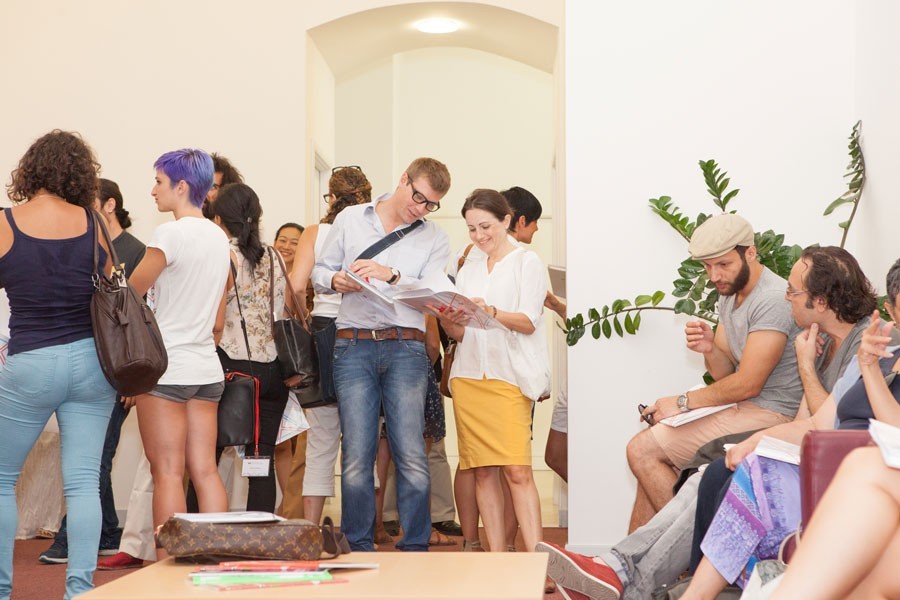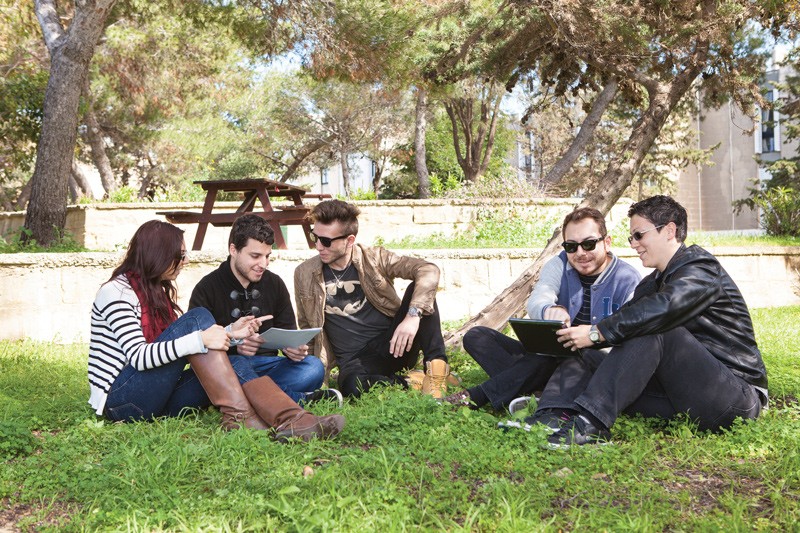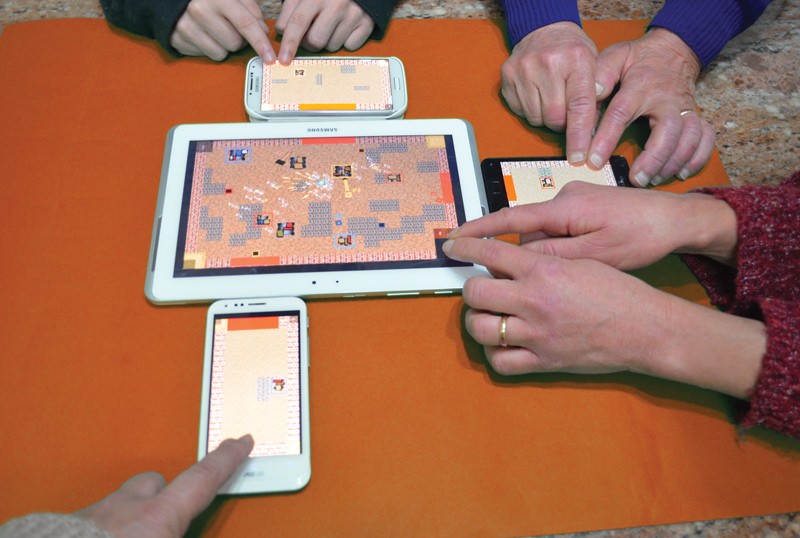I thought I hated deduction games. A friend of mine had purchased The Resistance and we played it till kingdom come. Everyone loved it, except me. It was too much a social exercise and too little a game. This is not necessarily bad, it just made the game extremely different with different groups, and it didn’t work with some of them. I assumed that this was true for all deduction games; 27th Passenger proved me wrong. 27th Passenger is about a group of assassins on a train. They all want to kill each other, but not the civilians. Of course, all players have a disguise ranging from a tough gangster to a sweeter schoolgirl.Continue reading
A Greener Chemical Pot
John Gabarretta discusses the elegance of chemistry though its reactions.
An Untapped Funding Resource
Dr Vasilis Valdramidis speaks about funding opportunities.Continue reading
Light up my Universe
What is the universe made of? How was it formed? How old is it? Will things stay the same forever?
The night sky is shedding its secrets as Ian Fenech Conti (Institute of Space Science and Astronomy) talks about his work measuring the most elusive matter in the universe.Continue reading
Hips 4 Eternity
All over the world, hip replacement surgeries are on the increase. Provisional data from the hip replacement register at Mater Dei shows that, in Malta during 2014, 145 people needed their hips replaced while another 11 needed revisions to old implants. With costs that run into the thousands, the problem of faulty implants caught the eye of a local research team of engineers and medics. Cassi Camilleri finds out more about their work in solving the dilemma. Photography by Elisa von Brockdorff
Let us fish4tomorrow
All over the world, governments and stakeholders are trying to cope with overfishing. Overfishing is when too much fish is caught which leads to an overall degradation of the marine ecosystem. It is the non-sustainable use of ocean resources. Words by J.D. Farrugia
Continue reading
Lighter and Stronger Planes
Bonnie Attard talks about the aerospace industry and how it can be improved.
Placing Cultural Research on the Map
The Valletta 2018 Foundation recently started a five-year research study to evaluate and monitor the European Capital of Culture (ECoC) project in Malta. The process combines both quantitative and qualitative approaches to collect data that will be communicated to the general public and interested stakeholders. This research will provide feedback to help fine-tune or correct the Foundation’s operations. The process aims to provide a local model for research in culture and the creative sector in order to encourage more cultural research after 2018.Continue reading
Social Wellbeing Policy at University?
University can be incredibly stressful. Staff perform high level work with plenty of academic responsibilities, while balancing a private life and leisure time. The number of students at University is rising every year. For academic and support staff this means a more intensive workload, pressure, and stress. For students it is the pressure of attaining good results, maintaining relationships, and other social and emotional wellbeing issues, such as coping with peer pressure, struggling with deadlines, and worries about the future. Numerous studies suggest that examinations negatively impact on student health and wellbeing. Some coping strategies and time management programmes have evolved at the University of Malta, for example by the University Chaplaincy. Such well-meaning initiatives are good and do good, but tend to happen sporadically and around examination time.
Many University of Malta students balance multiple identities. They often fall outside the typical demographic of an 18-year-old sixth form school leaver. Our students come from diverse socio-economic backgrounds, and may be studying full-time or part-time, with a variety of life roles: mature students, women with care responsibilities, persons challenged by disability or facing problems due to sexual orientation. Whatever the situation in life, each diverse identity places increased demands upon the students’ time and private life. These demands influence their University experiences, study perceptions, and learning style. Their peers might treat them differently due to their background.
“A social wellbeing policy will help foster confidence in its approach to academic learning, and to eliminate discrimination in favour of a more inclusive learning environment”
Besides worries about assignment deadlines and writing exams, many students are also in employment. I am not sure this trend is in line with University of Malta regulations, nevertheless, that is the situation. Students also worry about future prospects with no guarantee of secure employment after finishing their studies. So it is not only academic concerns that come in the way of student social wellbeing, and these may lead to high levels of stress, anxiety or frustration, depressed mood, difficulties with time management, procrastination, poor concentration, withdrawal from friends or family, or physical symptoms such as headaches, sleep problems, and exhaustion. University life presents numerous stress factors that may trigger off mental health difficulties.
Students experiencing stress are normally recommended psychological intervention and counselling, which may be beneficial for extremely stressed students. However, research suggests that physical activity helps improve mental health and wellbeing. The University of Malta, through its Work Resources Fund, promotes cycling through the Green Travel Plan. The initiative is more about sustainability and the environment, apart from a solution to the parking problem. However, cycling does improve our mental health and wellbeing, and is a free personal de-stressor by taking our mind off work or study, and leads to healthier lifestyle choices. 
A social wellbeing policy for University will help foster confidence in its approach to academic learning, and to eliminate discrimination in favour of a more inclusive learning environment. Indeed, the principles of equality and diversity such as gender or disability are essential for a true understanding of social wellbeing, and these same principles need to be included in our University’s policy document and implemented in practice. Diversity in a dynamic, intellectual environment enriches professional and educational experiences for both staff and students.
Diversity on campus is needed and important for a healthy University. Internationally, social wellbeing on campus is being promoted through an organisational structure embedded into the ethos, culture, policies, and daily practices of a university. A social wellbeing policy includes an improved occupational health and safety system, and a commitment to address mental wellbeing, physical inactivity, unhealthy eating and substance misuse. The University needs constant commitment to positively influence the life and work of all staff and students.

The University is encouraged to guard the integrity of its communication system. Collaboration and open communication fosters conversations and relationships necessary to bring about social wellbeing. The communication process needs to be trusted and confidential for team spirit and social wellbeing. For instance, I would strongly argue for an email policy that discourages unnecessary use of bcc in emails, as the practice of not telling the original addressee is unethical and downright deceitful.
The University of Malta could establish itself as a national contact point on the European Network for Health Promoting Universities (see www.eurohpu.aau.dk). It would commit the University to place social wellbeing high on its policy agenda. A working document published by the World Health Organisation Regional Office for Europe provides guidance on how to set up and develop a health-promoting university project, which would enhance and protect the social wellbeing of all staff and students.
Finally, I would also suggest an exploratory research study about aspects of university life, stress factors in teaching and learning activities, and how these impact on individual experiences. The aim is to understand the general quality of life, and how this can be improved for an informed social wellbeing policy document at the University of Malta.
This article is based on a paper Camilleri-Cassar presented at a seminar organised by the Faculty for Social Wellbeing in October 2013.
Read more here:
– Carroll, A. (2011) ‘Exploring the link between equality, diversity and wellbeing.’ In Marshall, L. and Morris, C. (eds) Taking Wellbeing Forward in higher education: reflections on theory and practice, University of Brighton Press.
– Hagarthy, D. and Currie, J. (2012) ‘The Exercise Class Experience: an opportunity to promote student wellbeing during the HSC’, Journal of Student Wellbeing, vol. 5(2):1-17.
– Hall, C., Ramm, J. and Jeffery, A. (2011) ‘Developing the University of Brighton as a Health Promoting University: the story so far.’ In Marshall, L. and Morris, C. (eds) Taking Wellbeing Forward in higher education: reflections on theory and practice, University of Brighton Press.
– UniHealth 2020: Mission Statement, www.eurohpu.aau.dk
An Automatically Tailored Experience
Digital games need to keep players engaged. Since games are interactive media, achieving this goal means that game designers need to anticipate player actions to create a pre-designed experience. Traditionally, developers have achieved this by restricting player freedom to a strict set of actions thereby curating player experience and ensuring the fun factor. However, games are taking a different route with more users making their own content (User Generated Content, UGC) through extensive creativity tools which make it hard to predict player experience.

To overcome these challenges Vincent E. Farrugia (supervised by Prof. Georgios N. Yannakakis), merged game design and artificial intelligence (AI). He developed a software framework for handling player engagement in environments which feature user generated content and groups. The three pronged solution tackles problems during game production, playing the game itself, and making sure the framework is sustainable. To maintain engagement within groups he analysed data for a particular person within the group but also patterns common across the whole group. Farrugia created software tools, autonomous AI aids, and tools to test and support the framework.
The software framework is made up of inter-operating modules. Firstly, an engagement policy module allows designers to specify theories to express their vision of positive game engagement. Player modelling then shapes this backbone to specific player engagement needs. The module can autonomously learn from player creations as reactions to game stimuli. Individual and group manager modules use this mixture of expert knowledge, AI learnt data, and player game-play history to automatically adapt game content to solve player engagement problems. This procedural content generation (PCG) is tailored for a specific player and time.
The framework’s abilities were showcased in a digital game also developed by Farrugia. Various technologies were incorporated to encourage player creativity in group sessions and to enhance networking. The setup also allowed the AI to quickly learn from each player via parallelism. Initial testing used a simulated environment with software agents. Preliminary testing on real players followed. The simulation was through a personality system to validate the underlying algorithms under various conditions. The resulting diverse game-play styles provide suggestions for AI model improvement. Farrugia is enthusiastic about future work for this AI framework and giving developers better tools to allow player creativity to flourish while maintaining positive game-play experiences.
This research was performed as part of a Master of Science degree at the Institute of Digital Games, University of Malta. It was partly funded by the Strategic Educational Pathways Scholarship (Malta), which is part-financed by the European Union—European Social Fund (ESF) under Operational Programme II—Cohesion Policy 2007—2013, ‘Empowering People for More Jobs and a Better Quality of Life’.




